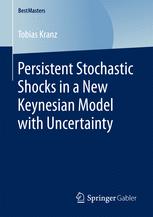

Most ebook files are in PDF format, so you can easily read them using various software such as Foxit Reader or directly on the Google Chrome browser.
Some ebook files are released by publishers in other formats such as .awz, .mobi, .epub, .fb2, etc. You may need to install specific software to read these formats on mobile/PC, such as Calibre.
Please read the tutorial at this link: https://ebookbell.com/faq
We offer FREE conversion to the popular formats you request; however, this may take some time. Therefore, right after payment, please email us, and we will try to provide the service as quickly as possible.
For some exceptional file formats or broken links (if any), please refrain from opening any disputes. Instead, email us first, and we will try to assist within a maximum of 6 hours.
EbookBell Team

5.0
100 reviewsThe book introduces the New Keynesian framework, historically through a literature overview and through a step-by-step derivation of a New Keynesian Phillips curve, an intertemporal IS curve, and a targeting rule for the central bank. This basic version is then expanded by introducing cost and demand shocks and uncertainty. The latter enters the model via second order Taylor approximation instead of linearization. Bringing all equations together results in an equilibrium condition which is simulated with a wide range of parameter values, including possible crisis scenarios. The author finds that accounting for uncertainty – regarding growth and inflation expectations – can lead to lower nominal interest rates set by the central bank.